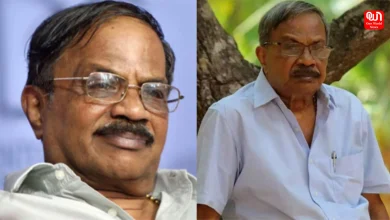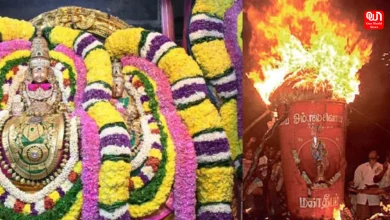
A Glimpse into Sikh History
With over 767,254 visits registered on its Facebook page and still counting, clearly there is no denying the fact that Gurudwara Bangla Sahib is one of the most loved places of Delhi for various reasons, be it the soothing night Gurbani, or the tasty langar or to offer prayers and sit by the sarovar just thinking! Well now there’s one more reason to visit Bangla Saheb and the reason is Baba Baghel Singh Multimedia Museum, which has become a hot spot for local and international tourists alike.
As you enter the museum, one sees huge glass panels with glass paintings, describing the journey of Guru Nanak Dev Ji, in the four directions across the world, with the sole purpose of spreading Sikhism.

Glass paintings, describing the journey of Guru Nanak Dev Ji, in the four directions across the world.
As one moves one, one sees an installation of the Khanda, explaining the meaning of each element present in the symbol.

Khanda, the symbol of Sikhism
From there on, starts the journey of legends and stories. First we are introduced to Baba Baghel Singh through paintings and various important aspects of his life are discussed and the Gurudwaras that Baba Baghel Singh helped in building.

Baba Baghel Singh and his life

The gurudwaras established by Baba Baghel Singh
A one of a kind museum, inaugrated in July 2014, and is supported by the World Punjabi Organisation. The museum has a rich collecttion of over 40 paintings drawn by artists from all over the country, projectors and exhibition screens. Walls are dedicated to explain the origin of Anand Karaj, Langar, various rituals like Lava Phere etc. And also each legend is explained in Hindi, English and Punjabi. We would love to share them with you, but you go and visit the museum yourself.

The Origin of the ‘Langar’
The two younger sons of Guru Gobind Singh ji, Baba Zorawar Singh and Baba Fateh Singh were bricked alive when they did not agree to Wazeer Khan’s demands
One of the things that did leave an impact was that a wall dedicated to all the women who made their contribution to Sikhism, which tells about the philosophy of the religion. Also the throne of Maharaja Ranjit Singh, tells us about how the leaders and their belief in “Simple Living and High Thinking!”

A wall describing the rituals in a Sikh wedding ceremony
One of the most interesting aspects of this museum is the availability of audio guide, with sensors that narrate to you the tales of the legends of the guru’s life, making the museum equally accessible to the visually challenged. After this, one I headed to an auditorium, which is equipped with a projector and a seating capacity of about 150 people that through cinematic experiences narrated to us the various tales.

The establishment of ‘Khalsa’
One could see an elderly explaining her grandson about various legends, the museum definitely acts as a bridge to anybody who wants to know more about Sikhism and also helps the younger generations to stay rooted with their culture and religion.
Picture Credits : Himali Shah, OneWorldNews
Have a news story, an interesting write-up or simply a suggestion? Write to us at
info@oneworldnews.com







